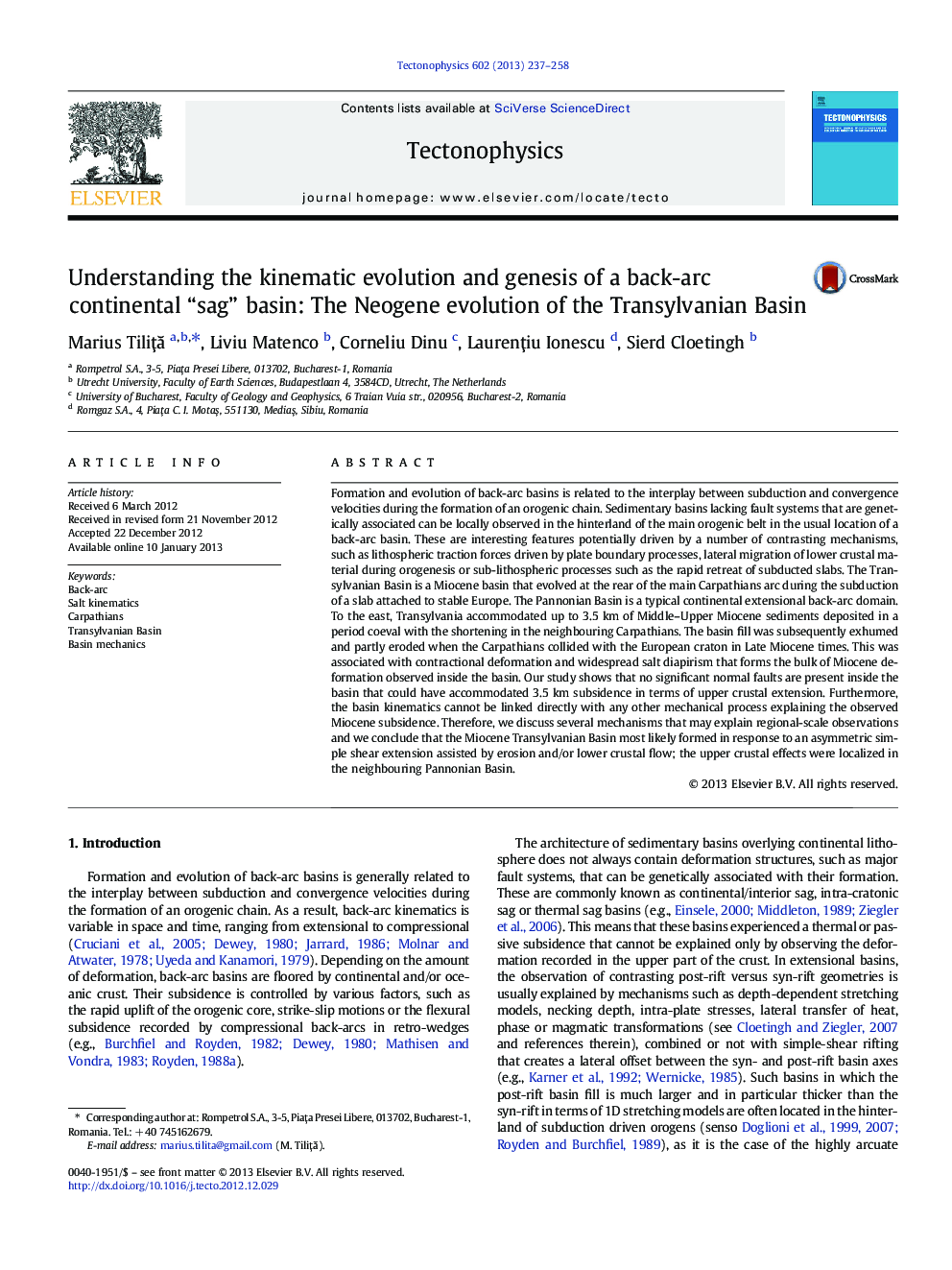| کد مقاله | کد نشریه | سال انتشار | مقاله انگلیسی | نسخه تمام متن |
|---|---|---|---|---|
| 4692254 | 1636785 | 2013 | 22 صفحه PDF | دانلود رایگان |

Formation and evolution of back-arc basins is related to the interplay between subduction and convergence velocities during the formation of an orogenic chain. Sedimentary basins lacking fault systems that are genetically associated can be locally observed in the hinterland of the main orogenic belt in the usual location of a back-arc basin. These are interesting features potentially driven by a number of contrasting mechanisms, such as lithospheric traction forces driven by plate boundary processes, lateral migration of lower crustal material during orogenesis or sub-lithospheric processes such as the rapid retreat of subducted slabs. The Transylvanian Basin is a Miocene basin that evolved at the rear of the main Carpathians arc during the subduction of a slab attached to stable Europe. The Pannonian Basin is a typical continental extensional back-arc domain. To the east, Transylvania accommodated up to 3.5 km of Middle–Upper Miocene sediments deposited in a period coeval with the shortening in the neighbouring Carpathians. The basin fill was subsequently exhumed and partly eroded when the Carpathians collided with the European craton in Late Miocene times. This was associated with contractional deformation and widespread salt diapirism that forms the bulk of Miocene deformation observed inside the basin. Our study shows that no significant normal faults are present inside the basin that could have accommodated 3.5 km subsidence in terms of upper crustal extension. Furthermore, the basin kinematics cannot be linked directly with any other mechanical process explaining the observed Miocene subsidence. Therefore, we discuss several mechanisms that may explain regional-scale observations and we conclude that the Miocene Transylvanian Basin most likely formed in response to an asymmetric simple shear extension assisted by erosion and/or lower crustal flow; the upper crustal effects were localized in the neighbouring Pannonian Basin.
► Evolution of a back-arc “sag” basin.
► Transylvanian Basin kinematics cannot be linked with an upper crustal mechanical process.
► Salt kinematics driven by regional compression expressed as lateral forces.
► Transylvania thermal subsidence is a result of extension in the Pannonian Basin.
Journal: Tectonophysics - Volume 602, 16 August 2013, Pages 237–258